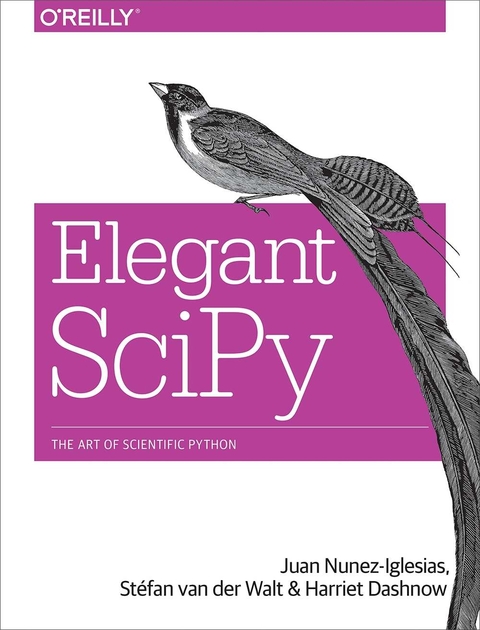
Elegant SciPy
O'Reilly Media (Verlag)
978-1-4919-2287-3 (ISBN)
Throughout the book, you’ll work with examples from the wider scientific Python ecosystem, using code that illustrates principles outlined in the book. Using actual scientific data, you’ll work on real-world problems with SciPy, NumPy, Pandas, scikit-image, and other Python libraries.
Explore the NumPy array, the data structure that underlies numerical scientific computation
Use quantile normalization to ensure that measurements fit a specific distribution
Represent separate regions in an image with a Region Adjacency Graph
Convert temporal or spatial data into frequency domain data with the Fast Fourier Transform
Solve sparse matrix problems, including image segmentations, with SciPy’s sparse module
Perform linear algebra by using SciPy packages
Explore image alignment (registration) with SciPy’s optimize module
Process large datasets with Python data streaming primitives and the Toolz libraryv
Juan Nunez-Iglesias is a Research Scientist at the Life Sciences Computation Centre in Melbourne, Australia. Prior positions include Research Associate at HHMI Janelia Farm (where he worked with Mitya Chklovskii) and Research Assistant / PhD student at the University of Southern California (where he studied computational biology supervised by Xianghong Jasmine Zhou). His principal research interests are neuroscience and image analysis. He is also interested in graph methods in bioinformatics, and in biostatistics. Stefan van der Walt is an assistant researcher at the Berkeley Institute for Data Science at the University of California, Berkeley and a senior lecturer in applied mathematics at Stellenbosch University, South Africa. He has been involved in the development of scientific open source software for more than a decade, and enjoys teaching Python at workshops and conferences. Stefan is the founder of scikit-image and a contributor to numpy, scipy and dipy. Harriet Dashnow is a bioinformatician and has worked at the Murdoch Childrens Research Institute, the Department of Biochemistry at the University of Melbourne and the Victorian Life Sciences Computation Initiative (VLSCI). Harriet obtained a BA (Psychology), a BS (Genetics and Biochemistry), and a MS (Bioinformatics) from the University of Melbourne. She is currently working towards a PhD. She organises and teaches computational skills workshops in such areas as genomics, Software Carpentry, Python, R, Unix and Git version control.
| Erscheinungsdatum | 13.09.2017 |
|---|---|
| Verlagsort | Sebastopol |
| Sprache | englisch |
| Maße | 150 x 250 mm |
| Gewicht | 666 g |
| Themenwelt | Mathematik / Informatik ► Informatik ► Web / Internet |
| ISBN-10 | 1-4919-2287-7 / 1491922877 |
| ISBN-13 | 978-1-4919-2287-3 / 9781491922873 |
| Zustand | Neuware |
| Haben Sie eine Frage zum Produkt? |
aus dem Bereich


